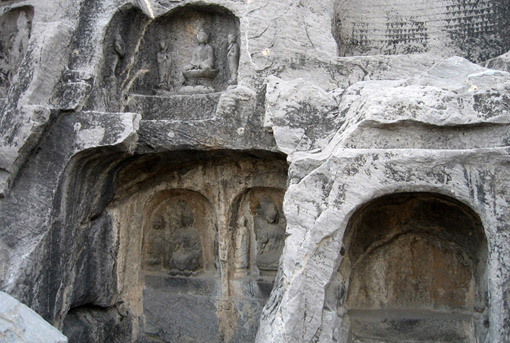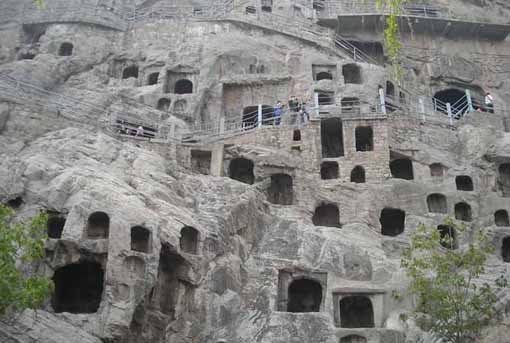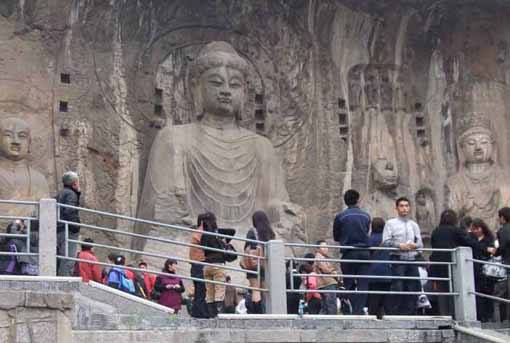|
||||||||||||||
|
||||||||||||||
Longmen GrottoesLongmen Grottoes
The Longmen Grottoes are located in the south of Luoyang City. They are between Mount Xiang and Mount Longmen and face Yi River. Longmen Grottoes, Yungang Caves and Mogao Caves are regarded as the three most famous treasure houses of stone inscriptions in China.
The grottoes were started around the year 493 when Emperor Xiaowen of the Northern Wei Dynasty (386-534) moved the capital to Luoyang and were continuously built during the 400 years until the Northern Song Dynasty (960-1127). The scenery measures 1,000 metres (about 1,094 yards) from north to south where there are over 2,300 holes and niches, 2,800 steles, 40 dagobas, 1,300 caves and 100,000 statues. Most of them are the works of the Northern Wei Dynasty and the flourishing age of the Tang Dynasty (618-907). Lots of historical materials concerning art, music, religion, calligraphy, medicine, costume and architecture are kept in Longmen Grottoes.
The most impressive figure is the statue of Vairocana Buddha sitting cross-legged on the eight-square lotus throne. It is 17.14 metres (about 56.23 feet) in total height with the head four metres (about 13 feet) in height and the ears 1.9 metres (about 6.2 feet) in length. Vairocana means illuminating all things in the sutra. The Buddha has a well-filled figure, a sacred and kindly expression and an elegant smile. According to the record on the epigraph, the Empress Wu Zetian together with her subjects took part in the ceremony of Introducing the Light (a Buddhist blessing that the Buddha opens the spiritual light of himself and shares it with others).
|




